As I sit down to share this recipe for abalone porridge, a wave of nostalgia washes over me. I still remember the first time my grandmother Nazia made this for me when I was just a little girl growing up in a small fishing village. We didn’t have much back then, but the sea provided us with the most wonderful gifts.
Every morning, the fishermen would return with their catches – crabs, prawns, fish and if we were lucky, abalone. That day, my grandmother surprised me with a steaming bowl of the most delicious porridge studded with tender abalone, mushrooms and vegetables. The subtle sweetness of the abalone paired beautifully with the creamy rice porridge. With the very first spoonful, I was transported back to the carefree days of my childhood.
Now as a recipe developer at Food And Meal, I want to share this nourishing dish from my upbringing with you all. More than just a recipe, this abalone porridge is a taste of home – of tradition, love and connection. The process of slowly simmering the rice and broth for hours infuses the porridge with warmth that fills you from the inside out. I hope that with each spoonful, you too will feel the comfort of good memories and time spent with those dearest to your heart.
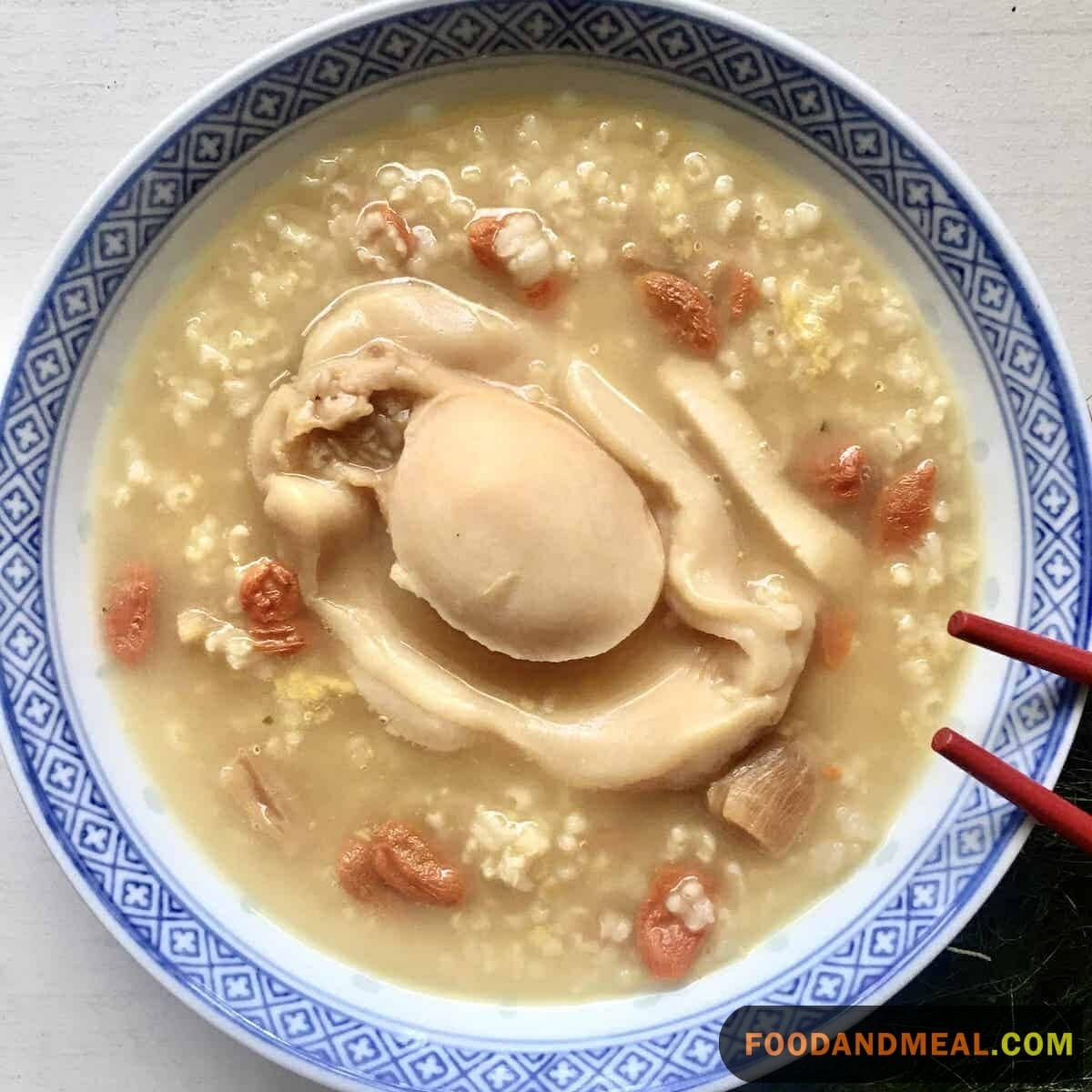
Korean Abalone Porridge Recipe
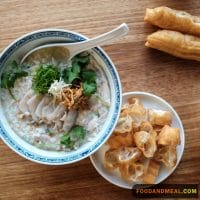
ABALONE PORRIDGE
Equipment
Ingredients
Instructions
- Soak the rice for 3 hours before cooking.
- Heat the sesame oil in a deep saucepan or stockpot over medium heat, add the abalone, and gently stir-fry.
- Add the rice along with the water. Bring to a boil and then immediately reduce the heat to low, cover the pan, and simmer gently for about 40 minutes, or until the juk becomes the thickness you like. Stir from time to time and watch that it doesn’t bubble over.
- Serve with soy sauce or Seasoned Soy Sauce on the side, for seasoning.
Video
Notes
Nutrition
© Food And Meal
This website provides approximate nutrition information for convenience and as a courtesy only. Nutrition data is gathered primarily from the Spoonacular Database, whenever available, or otherwise other online calculators.
Serving Suggestions for Korean Abalone Porridge
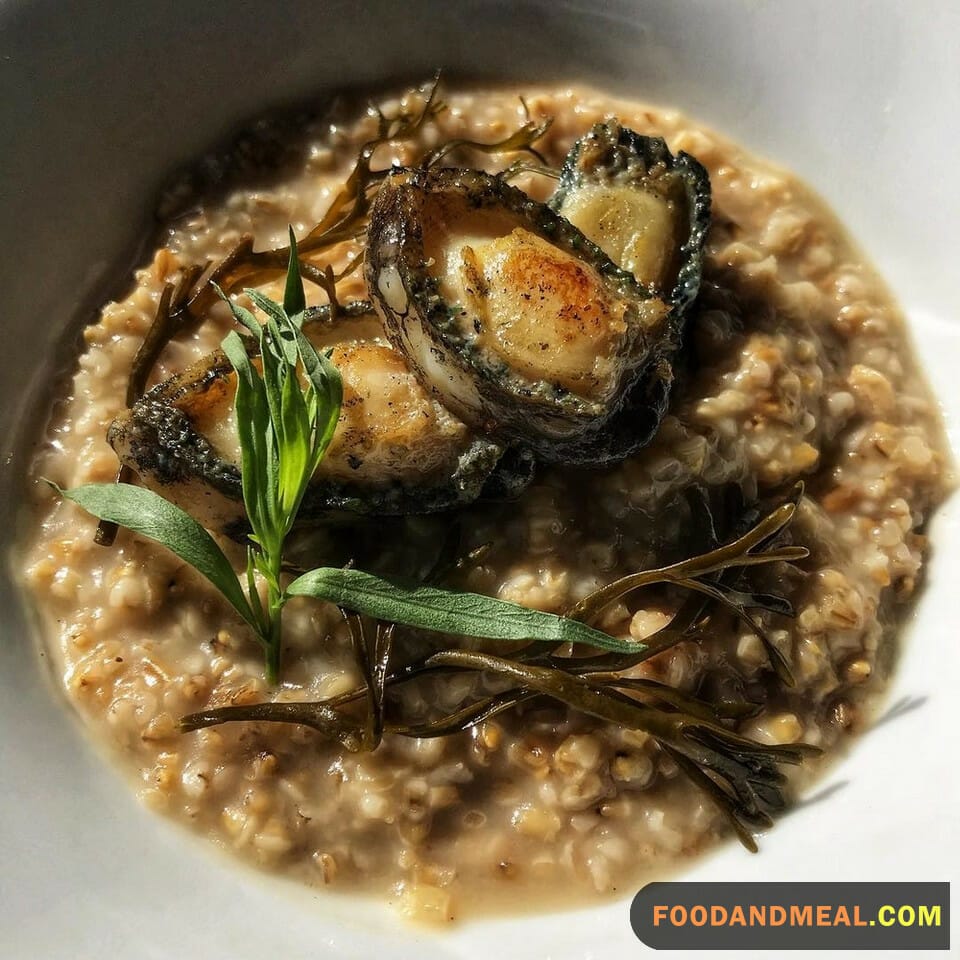
For a light meal, top bowls of porridge with extra sliced abalone, blanched bok choy, shredded carrots, green onions, and a squeeze of lemon. The vegetables and acid from the lemon nicely cut the richness of the porridge.
Take inspiration from congee houses and serve the porridge with sides like soy sauce eggs, pickled cucumbers, kimchi, and scallion pancakes for a mix of flavors and textures in one meal.
For heartier bowls, add pan-fried pork belly or chicken thighs on top of the porridge. The crispy meat contrasts nicely with the soft, creamy porridge underneath.
Finally, feel free to play around with different porridge toppings! Dried shrimp, shredded pork floss, century eggs, and crispy shallots also make tasty mix-ins to customize your bowl.
Cooking Tips for Korean Abalone Porridge
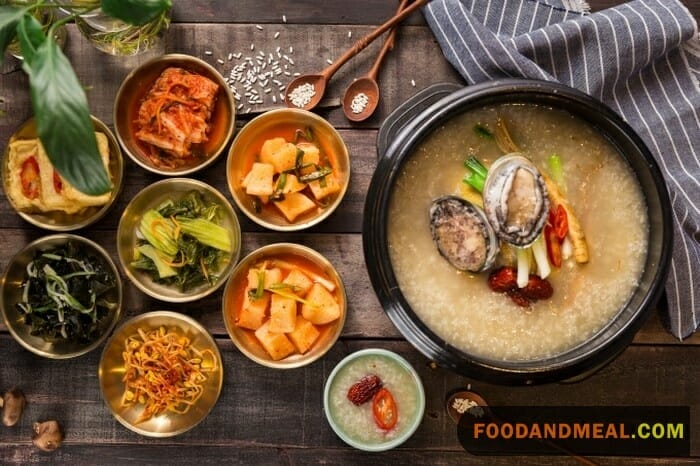
First and foremost, seek out the highest quality abalone you can find. The subtle sweetness of the tender abalone is the star of the show here, so don’t skimp on this special ingredient. I prefer fresh or frozen abalone, but canned or pouched can work in a pinch as well.
When making the porridge, patience is key. The low and slow cooking allows the starch from the rice to thicken the broth into a lush, creamy bowl of comfort. Resist the urge to rush the process. As you tend to the gently bubbling pot, take in the nostalgic aromas transporting you back to simpler times.
Be careful not to overcook the abalone, as it can quickly turn rubbery. Add it during the last 5 minutes of cooking to gently heat through. I love to top bowls of porridge with extra abalone slices, mushrooms, green onions and a dash of white pepper. A squeeze of lemon brightens all the flavors.
FAQs on Korean Abalone Porridge
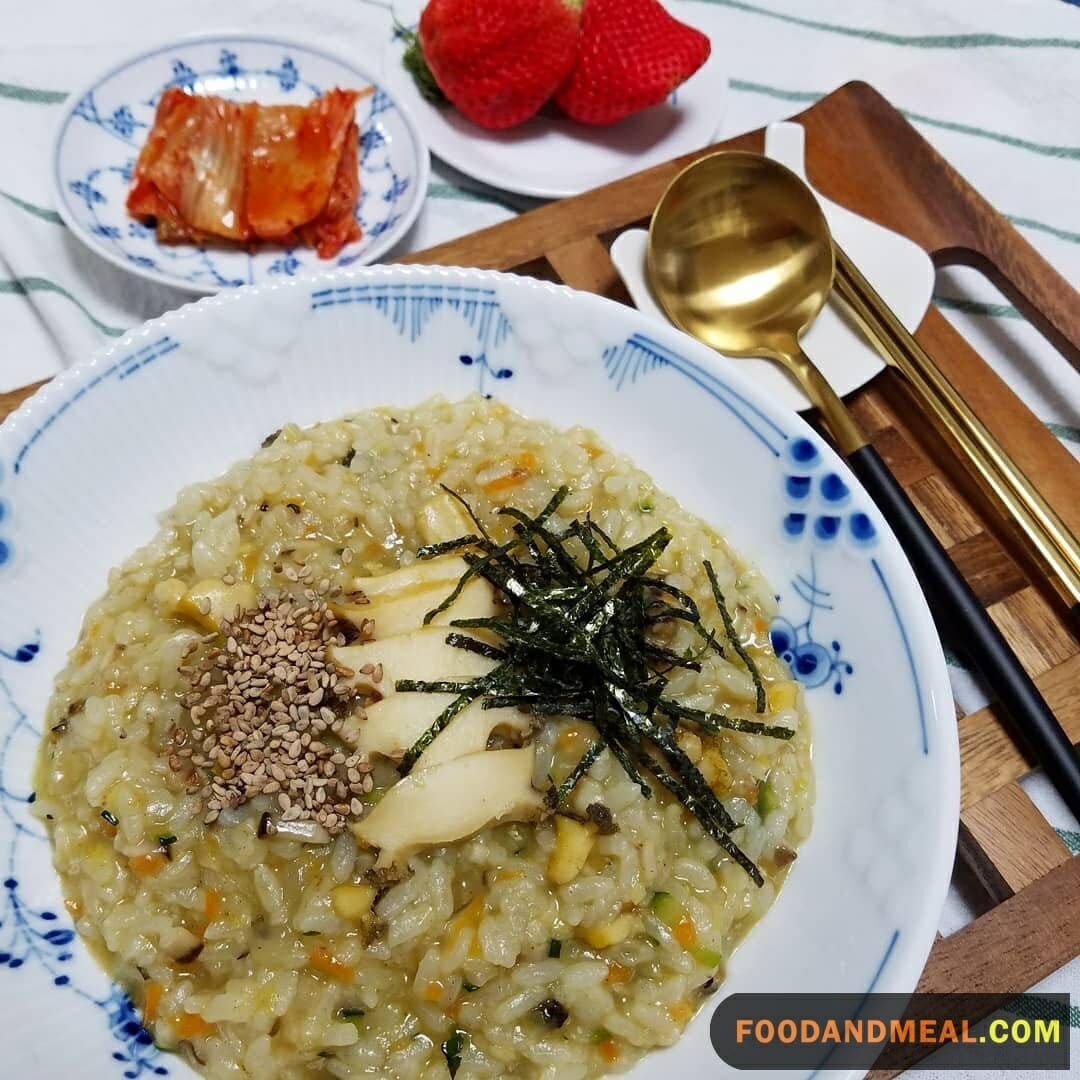
- How can I ensure the abalone remains tender?Abalone becomes tender when cooked just right. It’s crucial to introduce them into the porridge towards the end of the cooking process. If added too early, they can become chewy and lose their delicate flavor.
- Can I use frozen abalones?Certainly! If you can’t find fresh abalones, frozen ones work too. Just ensure they’re thoroughly defrosted and cleaned before cooking.
- What kind of rice works best for the porridge?Short-grain white rice is the traditional choice. Its starchy content yields the creamy consistency characteristic of Korean porridge.
- Can I add other seafood or ingredients?Absolutely! While abalone is the star, feel free to add other ingredients like shrimp, mushrooms, or even scallops to customize the dish to your liking.
- How do I store leftovers?Let the porridge cool to room temperature, then transfer to an airtight container. It can be refrigerated for up to 3 days. When reheating, you might want to add a splash of water or broth to rejuvenate its creamy consistency.
Conclusion
As I reach the end of this blog post about my grandmother’s treasured abalone porridge recipe, I’m filled with warmth and gratitude. This humble dish represents tradition, comfort and most of all – love.
The hours spent slowly simmering the porridge infuses it with care and nostalgia that I hope you’ll taste in each spoonful. The tender abalone and mix of vegetables and aromatics come together to create a soothing, velvety bowl. This soulful dish provides nourishment not just for the body, but for the spirit.
I’m thankful to Food And Meal for allowing me to share these cherished memories and recipes from my upbringing. Food has a special power to transport us back to sweeter times and connect us to our roots.
Hi! I'm Nazia of ‘Nazia Cooks’, a self-taught baker and cook residing in Chennai. Rooted in the rich South Indian culinary landscape, my palate has expanded to embrace global flavors. I revel in crafting fusion dishes, melding traditions to birth unique tastes.


